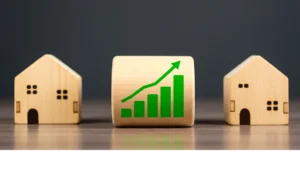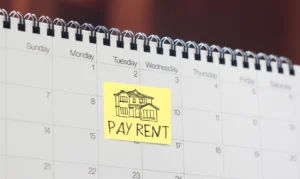How To Estimate Renovation Costs
By J Scott, Author of The Book on Estimating Rehab Costs
Whichever area of real estate investing you might choose to pursue – house flipping, buying rental property, commercial investments, etc. – there is one core skill that you almost certainly require if you want to be successful: the ability to estimate renovation costs.
The ability to accurately and precisely determine the cost to perform physical upgrades to a property is what sets consistently profitable investors apart from those who leave their financial fate to the whims of the market. Under-estimating renovation costs can quickly lead to dwindling profits on your projects. And over-estimating costs is almost as bad – it can lead to offer prices that are too low to compete with other investors who are better with their numbers.
 Unfortunately, the skill of estimating renovation costs isn’t one that comes easily. While there are lots of rules of thumb that we often hear about – per-square-foot cost estimations, estimations based on the year or condition of the house, etc. – none of these shortcuts will provide the accuracy most of us want when underwriting our deals.
Unfortunately, the skill of estimating renovation costs isn’t one that comes easily. While there are lots of rules of thumb that we often hear about – per-square-foot cost estimations, estimations based on the year or condition of the house, etc. – none of these shortcuts will provide the accuracy most of us want when underwriting our deals.
Many factors contribute to cost of renovating a property. From location of the property to the level of finishes to types of contractors being used to local building codes and even the time of year the renovation is being completed, the costs one investor will occur are unlikely to the costs another investor will incur. Rules of thumb can’t take all these factors into account. There is simply no substitute for the tried-and-true methodology most successful investors use to estimate their rehab costs.
Let’s take a look at what this methodology involves…
The 25 Renovation Components
First, it’s important to recognize that a house isn’t just a house. A house is a set of components that work both independently and together to create a complex system suitable to live. When creating a renovation budget, each of these components must be evaluated individually.
For example, the plumbing system in one house may be in perfect working condition while the plumbing in another, similar property, may be failing, and require substantial upgrades. And in another similar property, the internal plumbing system may be working just fine, but the fixtures – the components that we use, like the faucets and toilets – may need to be replaced.
Each of these houses, while otherwise similar, may require vastly different amounts of renovation to their plumbing systems. Likewise with the electrical system, the heating and air conditioning, the flooring, the cabinets, the roof, etc.
In fact, a typical house can be broken down into 25 major individual components, each of which must be evaluated independently to determine the amount of renovation needed.
While working through your renovation budgeting process, you will want to consider each of these components separately, as each will require its own amount of renovation, and perhaps even its own set of contractors and permits, to complete.
Inspecting The Property
There are two types of renovation tasks we do as investors: functional renovations and cosmetic renovations.
Functional renovations are the repair of those things that are not working, but should be. For example, issues with the plumbing, electrical, or HVAC systems; a leaking roof; appliances that don’t work; structural issues; or a garage door that doesn’t operate correctly.
Cosmetic renovations are the replacement of those things that will add aesthetic value to the property and be more appealing to a tenant or future buyer. For example, painting the walls; upgrading the flooring; replacing the kitchen cabinets and/or countertops; changing out the lighting fixtures, plumbing fixtures or appliances.
In order to determine what functional and cosmetic renovations are needed for your property, you’ll want to bring in a couple of experts who can help you. A great home inspector is trained to identify all the functional issues in a house. An inspector will evaluate each of the components listed above and provide a detailed list of what is not working properly or as expected.
A local real estate agent with an eye for design or an interior decorator can help you determine the cosmetic changes you should undertake in order to maximize the value of your renovation. Having knowledge of other, similar properties in the area, an agent or designer can recommend whether you should, for example, upgrade carpet to hardwood or whether granite countertops would make a better choice than the existing wood countertops.
Much like the inspector who can create a list of functional issues with the property, a good agent or designer can create a list of the cosmetic renovations the property would benefit from.
Determining Your Scope of Work
Now that you have your list of functional issues from your inspector and your list of cosmetic issues from your designer, it’s time to create your Scope of Work (SOW). An SOW is simply a detailed list of renovation tasks, grouped by component.
For example, with respect to the plumbing components in your house, your inspector may have noted that the water heater was rusting on the bottom and starting to leak and the hot and cold-water lines going into the hall bathroom shower are reversed.
These might translate into the following renovation tasks on your SOW:
- Replace existing water heater with 50-gallon electric water heater
- Reverse hot/cold water lines going into the hall bath shower
Likewise, for the plumbing, your designer may have recommended replacing the kitchen sink faucet and bathroom faucets with brushed nickel faucets in order to better match the new paint and flooring choices she chose, as well as replacing the pink tile around the hall bath shower.
This might translate into the following tasks on your SOW:
- Replace kitchen sink faucet and two bath sink faucets with brushed nickel faucets
- Retile hall bath shower using 2” x 4” white subway tile, total of about 100 sf of tile
Your SOW will consist of your 25 renovation components, each with a list of functional and cosmetic renovation tasks related to that component (if any).
Pricing Your SOW
Finally, now that you have your detailed SOW, it’s time to assign both a material and a labor price to each task.
For the material prices, you will want to decide which of the materials you will be choosing yourself versus the materials that you will expect the contractors to provide. I generally recommend that investors choose their own “finish materials” and allow their contractors to provide the “building materials.”
Finish materials generally include those things where the aesthetics matter. For example, flooring, cabinets, countertops, plumbing and lighting fixtures, tile, appliances and other things where your agent or designer can help you make specific selections that will provide maximum cosmetic appeal.
Building materials generally include those things that will be important to the contractor, but not so important to you or your buyer. For example, the lumber, nails, fasteners, roofing materials, sheetrock, etc. Additionally, I recommend letting your contractor provide any materials that they might be able to get far less expensive than you can, such as paint (though you and your designer should be providing the specific paint colors, of course).
For the materials you will be choosing yourself, I recommend walking the aisles of the big box stores, like Home Depot and Lowes, to select and price out specific materials. Other options for finding and pricing materials include online retailers like Amazon.com or specialty suppliers.
For labor costs and building material costs, you will want to get contractor bids for each of the items on your SOW. You have the option of working with individual specialty contractors – like painters, plumbers, electricians, carpenters, roofers, etc. – for each task on the SOW, or finding a general contractor who can provide an itemized bid for each of the items.
Once you have a labor and a material price for each of the items on the SOW, you can add up the prices to estimate your total renovation budget. If you’re new to the process, I generally recommend adding at least 10-20% to that estimate on your first project, to account for those miscellaneous items that you may have forgotten or surprises that may arise during the renovation.
About the Author

 J Scott is an investor, entrepreneur, and author of five books, including The Book on Estimating Rehab Costs. He has completed over 400 single family flips and has completed renovations across more than 1,000 multifamily units. You can contact J at www.ConnectWithJScott.com.
J Scott is an investor, entrepreneur, and author of five books, including The Book on Estimating Rehab Costs. He has completed over 400 single family flips and has completed renovations across more than 1,000 multifamily units. You can contact J at www.ConnectWithJScott.com.













 Accessibility
Accessibility